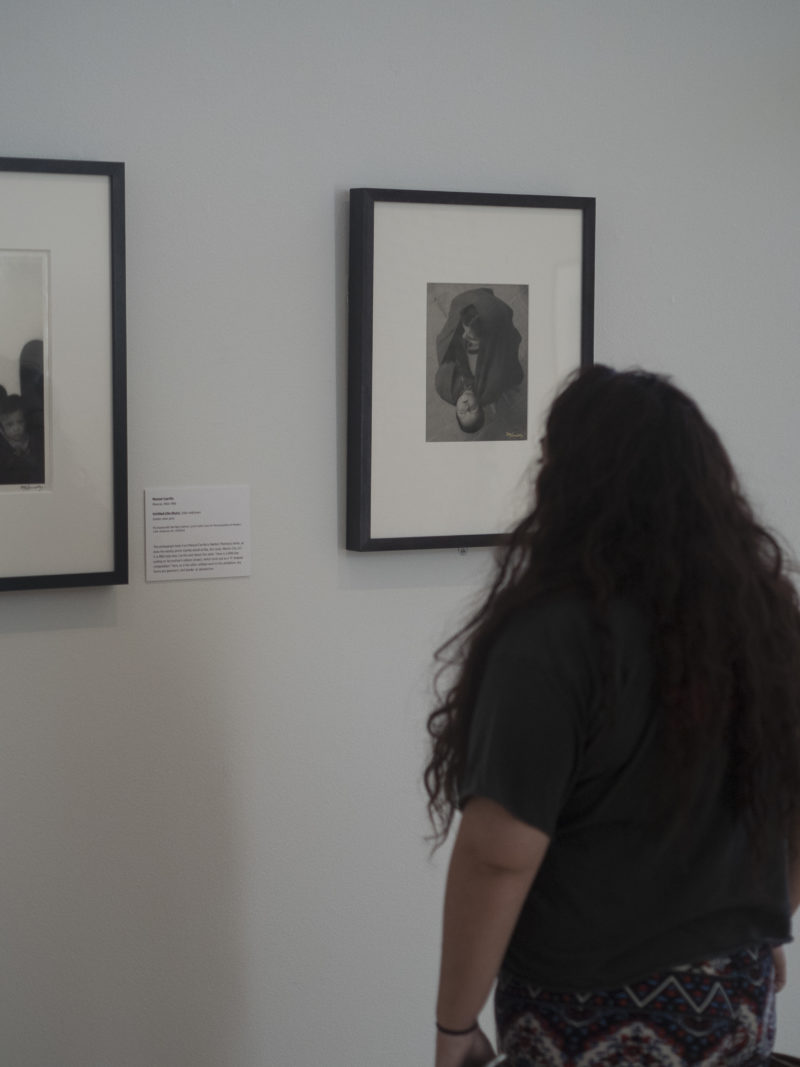The early 1920s saw a drastic change in the way the world perceived photographs. The transition from commercial product to work of art was nurtured by many famous names, but the San Antonio Museum of Art‘s (SAMA) exhibition entitled “Intercambios” analyzes the exchange of ideas facilitated by Edward Weston, Tina Modotti and several Mexico-based artists.
The Mexican Revolution and the establishment of a democratic government encouraged a new and unified Mexican identity, one that sought modernity while it recognized and reconciled the diversity of Mexican indigenous traditions. At the same time, the American art world was experiencing the beginnings of the photo-secessionist movement. Photographers were departing from realism and exploring their own interpretations of a given subject matter.
“˜Intercambio’ is the Spanish word for “˜exchange.’ In the 1920s, Mexico established an active Ministry of Public Education, which commissioned political and socially relevant murals in many public spaces. This open discourse became a platform for familiar faces in the Mexican muralist and social realism movements: Frida Kahlo, Diego Rivera, Anita Brenner and Jean Charlot, to name a few. Californian artists Edward Weston and Tina Modotti brought photo-secessionist ideas with them to Mexico City in 1923 to study and take part in the rich exchange of politics, art and social movements. Before long, Mexican artists were helping build photography into the robust art form it is today.
“Intercambios” lines the walls of the SAMA’s Golden Gallery, next to the contemporary art rooms, on the second floor. All of the pieces currently belong to the permanent collection. While work by Weston and Modotti can be seen at the beginning of the exhibition, a majority of the photographs are by Manuel Alvarez Bravo and Manuel Carrillo and all of the subject matter deals with Mexican life or tradition.
Bravo’s work shows a great deal of photo-secessionist influence. Like Weston, his compositions make monuments of the commonplace. Familiar objects are enlarged or framed in a way that approaches complete abstraction. A wrench romanticized in this style ceases to be a wrench and is transformed into something softer. Bravo titled the image “Instrumental.” A woman shrouded in darkness with most of her features obscured becomes “A Portrait of the Eternal.”
Carrillo is fond of playing with geometry. His subjects are often split diagonally or viewed through odd angles, as if the viewer were directly above or below the composition. Two of the images are from a series in which Carrillo focused on mothers and children. Through also approaching abstraction, these pieces capture quiet and tender moments of domesticity in a way that is altogether unique.
Also worth noting are the photographs of murals, people, home goods and landscapes. The pictures are soft and uncluttered and allow the viewer into a moment of Mexican life. Tina Modotti captured a now-famous portrait of Anita Brenner, a scholar and intellectual who wrote extensively on the culture and history of Mexico. This exhibition captures the essence of an entire decade of art and societal change. Just across the hall, SAMA’s permanent modern and contemporary Mexican art is displayed, where one can view work by more artists living and working during the time, including Rivera and Charlot.
Under scrutiny, modernist photography can appear nonsensical, but the departure from strict photojournalistic compositions established photography as a true art form rather than a commercial tool. Though small, this exhibition is informative and necessary. Modern art and artists are often discussed within the context of the social upheavals of World Wars I and II, creating a Eurocentric and sometimes mindlessly white-washed timeline of art history.
“Intercambios” reminds the viewer of the contributions of Mexican artists to modern art, as they saw their own intensely political and socially tumultuous cultural changes.







